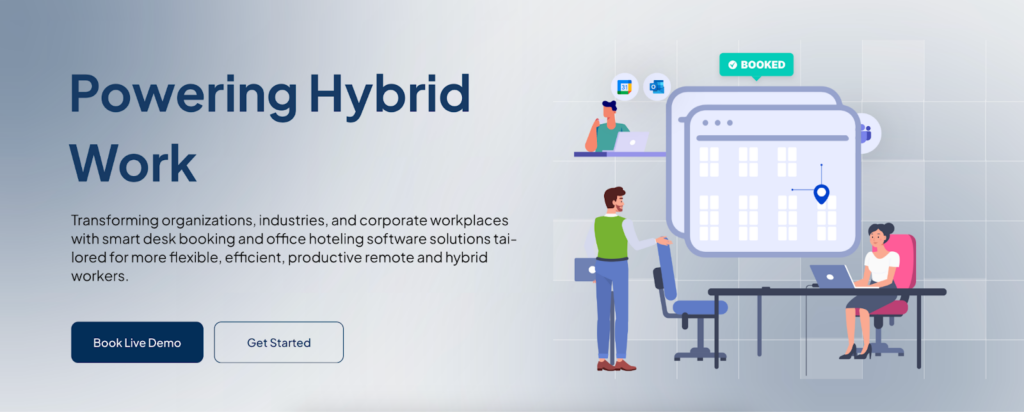Many organizations face the ongoing challenge of creating a productive and harmonious global workplace. With teams across countries and time zones, businesses must address communication barriers, cultural differences, and logistical complexities.
In this article, we will discuss the global workplace and provide the best tips for optimizing it and improving team engagement, employee well-being, and organizational success.
What Is a Global Workplace?
A global workplace is an interconnected system where employees, managers, and stakeholders collaborate across borders.
This type of workplace is common in industries like professional services, technology, and manufacturing. Companies rely on a global team with the right skills to meet the demands of international markets.
Key characteristics of a global workplace include:
- Hybrid work schedule across different time zones.
- Employees from diverse cultural backgrounds.
- Operations that comply with various local laws and regulations.
Top 10 Tips to Optimize a Global Workplace
Organizations with a global workplace face unique challenges, but clear strategies can improve collaboration and productivity. Employers should focus on communication, mental health, technology, and cultural understanding to build a stronger global workforce.
1. Foster Clear Communication
Clear communication builds trust and keeps employees aligned. Teams across different locations often struggle with language barriers and time zone differences. Companies should use tools that make communication faster and easier.
Platforms like Zoom or Microsoft Teams connect employees across countries, while language translation tools bridge communication gaps. Training managers to deliver clear instructions also reduces confusion and improves employee efficiency.
2. Use Technology to Connect Teams
Technology simplifies how teams work together across locations. There are different software solutions available, such as:
- Collaboration platforms
- Cloud-based tools
- Data analytics software
- Cybersecurity systems
Collaboration platforms like Trello or Asana help employees track projects in real time. Cloud-based tools allow teams to share and edit documents without delays, and data analytics tools provide insights into team performance.
Cybersecurity measures also protect sensitive information to build trust.
3. Embrace Cultural Diversity
Cultural diversity adds value to any office space. Employees bring certain perspectives that can spark creativity and innovation. Companies that celebrate different cultures create a sense of inclusion.
You can host cultural awareness sessions to help employees understand each other better. Encouraging teams to share their traditions promotes respect and builds stronger relationships.
4. Adapt to Time Zone Differences
Time zone differences affect productivity and employee experience. You can schedule overlapping work hours to allow employees to connect more efficiently. Use tools like World Clock to make planning across regions easier.
Recording meetings for those who cannot attend keeps everyone informed. You can also rotate meeting times across time zones to prevent one group from feeling overlooked.
5. Invest in Training and Development
Training employees improves performance and builds loyalty. Provide access to:
- Online courses
- Workshops
- Certifications
This will help develop new skills and employee qualities. Leadership training prepares employees for future roles within the company. Offering development opportunities shows that a company values growth, which encourages top talent to stay long-term.
6. Balance Global and Local Needs
Companies operating across different regions must balance global processes with local practices. Standardizing policies across the organization creates consistency, but flexibility is a significant factor in respecting local laws and cultural norms.
Allowing remote teams to adjust procedures to fit their needs helps maintain alignment while respecting local practices.
7. Increase Employee Engagement
Engaged employees produce better results and stay with their companies longer. You can build trust and motivation in your employees through:
- Recognizing achievements
- Involving workers in decision-making
- Sharing feedback
Regular surveys help organizations understand what matters most to their teams. Using feedback from the surveys allows you to improve satisfaction and strengthen loyalty.
8. Maintain Safety and Legal Compliance
Workplace safety and legal compliance are key factors for any organization. Companies must follow local laws in every country where they operate.
Regular audits and clear safety protocols reduce risks. Partnering with legal experts ensures companies meet all requirements and build employee trust.
9. Support Employee Mental Health
Employee mental health has become a top priority for organizations. Post-pandemic work challenges created stress for many employees, especially those working remotely. Companies should provide access to:
- Counseling
- Wellness programs
- Employee assistance programs
Flexible work schedules help reduce stress by allowing employees to balance personal and professional responsibilities. Managers’ regular check-ins create an environment where workers feel valued and supported, which helps retain employees.
10. Use Data to Improve Decisions
Data helps companies identify opportunities for improvement. Analyzing survey results and performance metrics reveals what works and what does not.
Employee reports provide valuable insights into their needs and challenges. Key findings from any year’s report will guide decisions and improve workplace outcomes over time.
How DeskFlex Supports a Global Workplace
DeskFlex provides tools that simplify resource management, increase productivity, and improve employee collaboration in a global workplace. Its features focus on flexibility, safety, and data-driven solutions to help organizations meet the challenges of modern work environments.
With tools designed for both remote and on-site teams, DeskFlex meets the needs of businesses looking to improve operations across locations.
Visitor Access and Workplace Safety
DeskFlex includes visitor access tools that control who enters office locations, such as:
- Visitor management
- Thermal detection
- Contact tracing
The visitor management system tracks visitor activity and provides security updates. Thermal detection technology helps companies monitor health by detecting elevated temperatures.
Contact tracing features allow organizations to track potential risks. It creates a safer environment for the organization.
Room Scheduling and Space Management
The software simplifies booking and managing meeting spaces. The room display touchscreen shows real-time meeting room availability and schedules to help employees make quick decisions about their workspace needs.
Advanced analytics tools provide insights into how rooms are used and aid managers in identifying underutilized spaces. These allow companies to organize their office environments more efficiently and increase overall productivity.
Supporting Hybrid Work Models
DeskFlex offers features that support a hybrid work approach so that employees can stay connected across remote and in-office roles. The desk booking tool lets workers remotely reserve:
- Desks
- Meeting rooms
- Office spaces
Resource reservation allows employees to book equipment or facilities in advance. These options provide flexibility for employees and help employers maintain a productive workplace for both remote and on-site workers.
Flexible Workspace Solutions With FlexCube
FlexCube introduces a modular approach to workspaces. Employees book desks and workstations as needed, allowing teams to adapt to project demands. Bluetooth integration allows accurate tracking of employee proximity, which improves team coordination.
FlexCube supports dynamic office setups. It helps businesses optimize their use of available space while meeting the needs of their workforce.
Seamless Integration With Business Tools
DeskFlex connects with platforms like:
- Microsoft Office 365
- Outlook
- Zapier
It makes scheduling and resource management easier. The Microsoft Office integration keeps calendars synced across devices, which helps teams stay organized. Single sign-on (SSO) through Okta adds a layer of security while simplifying access to necessary tools.
Creating Better Employee Experiences
It focuses on practical tools that make the workplace easier to navigate. 3D floor maps help employees locate meeting rooms or workstations quickly. Lobby kiosks also offer interactive guidance for employees and visitors and provide directions or service options.
Data Insights for Workplace Decisions
The platform provides detailed analytics and reporting features. These tools track:
- Workspace usage
- Identify trends
- Highlight areas for improvement
The abandoned meeting protection feature reduces wasted resources by reallocating unused rooms. Managers use these insights to make better decisions that improve office efficiency and increase employee satisfaction.
Improve daily operations and support employees across locations with DeskFlex. Book a demo today!
FAQs About Global Workplace
What is a global workplace?
A global workplace involves employees, teams, and operations across multiple countries. It supports collaboration among diverse groups using tools and processes to address logistical and communication challenges.
Why do companies value a global workplace?
Companies value global workplaces for access to diverse talent, entry into new markets, and broader skill sets. This also supports innovation and problem-solving.
What challenges arise in managing global workplaces?
Challenges include time zone differences, cultural misunderstandings, language barriers, and legal requirements. Managers also address technology gaps and employee engagement issues.
How do companies support mental health in global teams?
Companies provide counseling, wellness resources, and flexible schedules. Regular check-ins and opportunities for connection improve mental health support.



